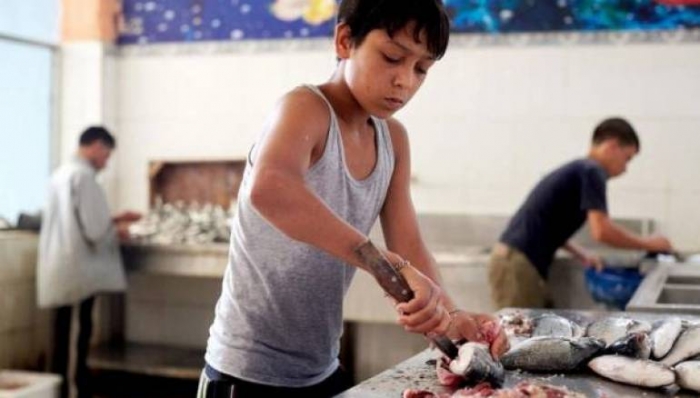Khaled al-Abed can no longer support his family after losing his job washing dishes at a Syrian restaurant in the southern Turkish city of Gaziantep after he was replaced by the owner’s relative.
For the 10th day in a row, 40-year-old Khaled roams the streets and alleyways searching for work opportunities, but all his attempts have failed because employers prefer to hire younger workers.
Khaled told Iqtissad: “No one wants to hire older laborers, and that is to avoid paying an appropriate monthly salary. They prefer to recruit children and pay lower wages.”
He indicated that his situation is similar for many Syrian laborers in the city, highlighting that a large number of Turkish employers refuses to hire older laborers based on the principle of respect, explaining that “Turks refuse for workmen to be older than the master, and for this reason they do not accept the idea that the workmen be older in age.”
Like Khaled, 45-year-old Kassem al-Amirayin struggled to find a job opportunity in order to provide for his family. He told Iqtissad that Turkish employers are still unconvinced of his ability to work.
Kassem sells fruit and vegetables in popular markets at a stall owned by a Turkish person and is paid a daily wage of about 40 Turkish lira. Kassem describes his wage as excellent given the salaries that Syrians are earning in Gaziantep, adding, “it is true my work is very tiring, and requires standing up for long time, but the pay is appropriate.”
He continued: “the problem is here in Gaziantep city that the job opportunities are limited, as the city attracts a large number of Syrians wanting to work, and this in turn presents a large opportunity for Turkish and Syrian employers equally for them to choose.”
The Syrian-led Democratic Republic Studies Center stated in a recent study that Gaziantep city witnesses the highest rates of Syrian child laborers in the absence of effective Turkish and international laws to limit the phenomenon.
This article was edited by The Syrian Observer. Responsibility for the information and views set out in this article lies entirely with the author.


